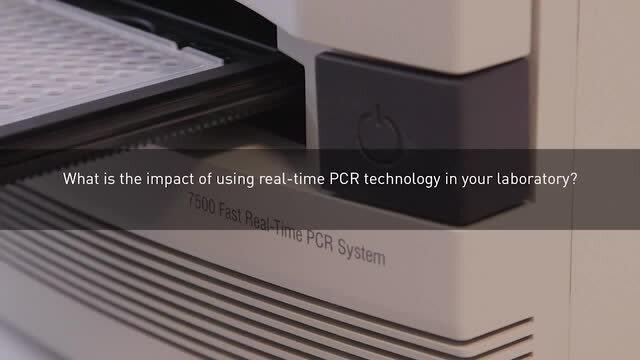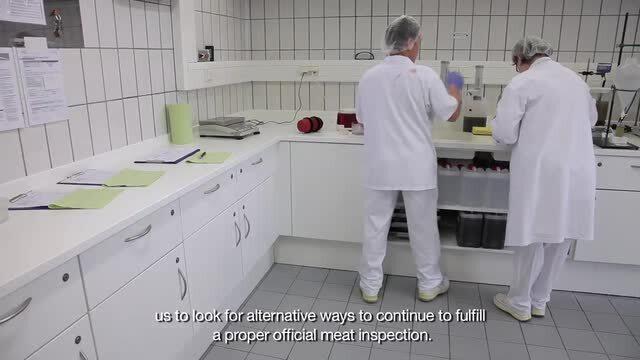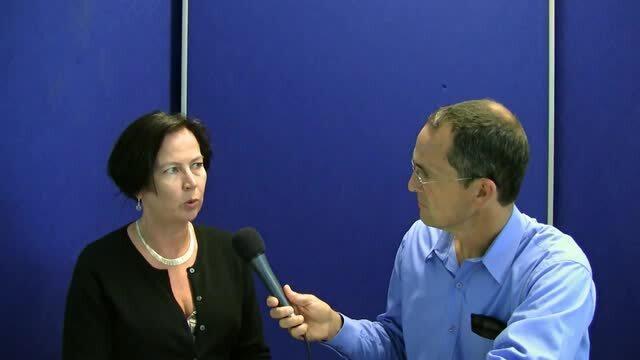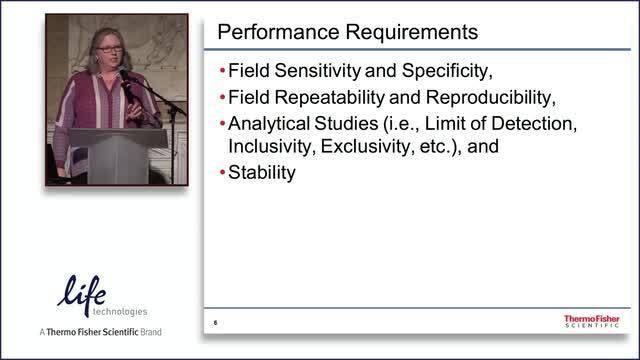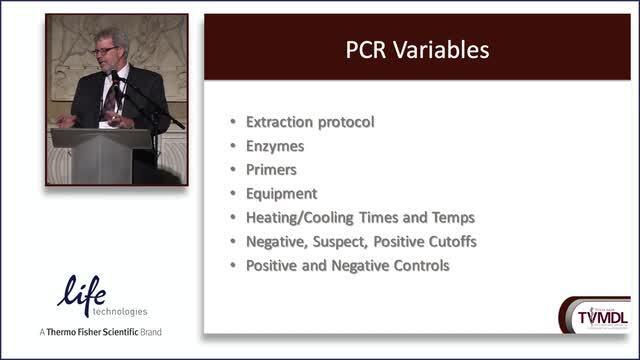
Dr. Liz Wagstrom, chief veterinarian with the National Pork Producers Council based in Des Moines, Iowa, USA, talks about the importance of having reliable tests for African swine fever. She says that it is critical to have a test that allows you to be comfortable that a positive is truly a positive and that a negative is truly a negative, especially when dealing with a disease that has the trade and animal health impacts of African swine fever.
George Charbonneau, veterinarian with the South West Ontario Veterinary Services, says that with the implementation of the veterinary feed directive rule, veterinarians will increasingly use diagnostics to enable the prudent use of antimicrobials.
Dustin Oedekoven, state veterinarian for South Dakota, talks about the signs of Trichomoniasis (Trich) in a herd and what strategies South Dakota has in place to prevent positive cattle from entering the state. A combination of PCR tests and regulations have helped reduce the incidence of Trich in South Dakota.
Joe Connor, practicing veterinarian with Carthage Veterinary Services, talks about the increased use of laboratory diagnostics in Asia, Mexico, and South America, and how confidence in diagnostic results helps him give clients the correct answers.
Bill Hollis, practicing veterinarian with Carthage Veterinary Services, talks about how their new lab allows their veterinarians to more quickly get diagnostic test results, and be more effective.
Paul Sundberg, executive director of the Swine Health Information Center, talks about the focus of the center on emerging diseases and how diagnostics can assist preparations for the next outbreak.
Dr. Bert Urlings, Director, Quality Assurance, discusses Vion Food Group’s use of Applied Biosystems zoonotic disease detection solutions to help ensure food safety and production efficiency. He explains how the use of antibody testing and food chain information as an objective control method provides Vion with a risk-based approach to helping farmers improve their biosecurity efforts.
Dr. Esthel Frederic, Consulting Veterinarian of GDS18, France, talks about the development of an efficient MAP test protocol for accurate ruminant herd diagnosis. The team at GDS 18 conducted a study in which they compared results of diagnostic testing on individual goats to testing of environmental samples (pooled - bulk milk, milk filter and swab socks sampled on the same herds).
MAP infection in cattle occurs mainly the first weeks of life. For efficient control of paratuberculosis in an infected herd, it is therefore important to prevent new infections among calves. Dr. Jean-Yves Houtain of ARSIA, Belgium, talks about a recent study using a highly sensitive detection method to assess the risk factors for MAP infections in very young calves.
Paratuberculosis (Johne’s disease) can have a severe impact on the health of cattle and ruminant herds, which can contribute to significant economic losses. Dr. Petr Kralik of the Veterinary Research Institute, Czech Republic, explains how diagnostic tools can be used to control the disease through the early identification of paratuberculosis levels in animal herds.
Jakob Decker of the Trichinella state laboratory located at Germany’s largest slaughterhouse, in Gütersloh, discusses the implementation of the PrioCHECK™ Trichinella AAD solution in the Gütersloh lab and the many advantages it offers over the traditional pepsin digestion method.
Antimicrobials do not work on viral diseases such as porcine reproductive and respiratory syndrome (PRRS), yet a viral infection can compromise a pig’s immune system and make the animal susceptible to bacterial infections. Dr. Lisa Becton of the National Pork Board explains how veterinarians are helping to limit antimicrobial use by utilizing diagnostics to guide their treatment of specific animal health issues.
Dr. Derald Holtkamp, associate professor of veterinary medicine at Iowa State University, talks about the devastating economic effects of porcine reproductive and respiratory syndrome (PRRS), and the important role diagnostics plays in controlling the virus. Dr. Holtkamp estimates that the North American swine industry loses approximately 9.9 million pigs per year to the PRRS virus, at an annual cost of $664 million.
Diagnostics is the most important element in detecting and differentiating emerging diseases from endemic and domestic diseases, says Matt Cochran, DVM, of Texas A&M University. The new norm is emerging diseases, says Cochran, and he advocates an early-warning system for disease detection. Diagnostic test results are a big part of this system, as they provide confirmation and differentiation data as feedback to programs.
Bill Hollis, DVM, of Carthage Veterinary Service, explains the requirements for diagnosis of swine diseases, including PRRS. Many swine diseases, including porcine reproductive and respiratory syndrome (PRRS), have symptoms in common that "look" the same, making the diseases difficult to diagnose. Veterinarians therefore regularly rely on diagnostics to help identify the specific disease that a producer is dealing with on the farm.
Dr. Michael Murtaugh of the University of Minnesota shares insights on how emerging virulent strains of porcine reproductive and respiratory syndrome (PRRS) virus can cause waves of disease, and how diagnostics plays a role in identifying these developing viruses. "We do not know exactly how these happen, but the genetic changes have to involve mutation and recombination, and the consequences are bad," says Murtaugh.
Dr. Jeff Zimmerman, professor at Iowa State University, discusses swine oral fluids and the emerging role they are playing within diagnostic testing. Oral fluid testing is being used more frequently around the globe for surveillance purposes, to prove negativity, and for economical vaccination strategies. According to Dr. Zimmerman, oral fluid testing will continue to expand as producers need to be more proactive in controlling diseases.
The veterinary diagnostic laboratory team at Iowa State University plays a tremendous role in livestock health surveillance and leverages real-time diagnostic information to help producers make decisions about disease management within their herds. Dr. Roger Main of Iowa State University discusses swine biosurveillance and explains how ante mortem swine diagnostic testing has evolved to play a significant role in swine practice.
Patrik Buholzer, product manager for Thermo Fisher Scientific, highlights the advantages of the PrioCHECK™ Trichinella AAD Kit. The assay is a safer, cleaner, and reliable alternative to the current alternative digestion method for the detection of Trichinella larvae in pig meat.
Prof. Lis Alban, chief scientist for the Danish Agriculture and Food Council, talks about the advantages of Trichinella testing in a risk-based surveillance system, and the importance of collaboration between veterinarians and the diagnostic laboratory.
Dr. Alvin Gajadhar, current president of the ICT, talks about the importance and development of Trichinella diagnostics. Animals do not show signs when infected with Trichinella, but they can infect humans—which makes Trichinella testing very critical.
An interview with Dr. Ray Gamble of the National Academy of Sciences (US) about the importance of diagnostic testing in Trichinella control, and the use of serology testing as a simple and cost-effective method for Trichinella testing on the farm and at slaughter.
Mary Anne Williams, senior manager, Regulatory Affairs (Animal Health), Thermo Fisher Scientific, discusses the process for obtaining a USDA license, the importance of using USDA-licensed diagnostic kits, and the benefits to labs, health officials, and veterinarians.
Bruce L. Ackey, DVM, director of the Texas A&M Veterinary Medical Diagnostic Laboratory, discusses the potential variables associated with farm animal diagnostic testing and how the standardization of testing workflows can help benefit labs and their clients.
For Veterinary Use Only. For In Vitro Use Only. Regulatory requirements vary by country; products may not be available in your geographic area.










